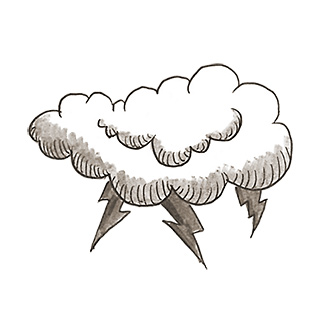
Related Questions
- What happens to electricity when nothing is plugged into an outlet?
- Why can’t fusion energy solve the global energy crisis?
- Can sound be converted to useful energy?
- How do birds sit on high-voltage power lines without getting electrocuted?
- Is it possible to collect energy from foot traffic?
- Is there a way to harness electricity from lightning?
- Could we use exercise machines as energy sources?
- How many wind turbines would it take to power all of New York City?
- What is “clean” coal?
- Why do the products of a nuclear fission reaction in uranium have three neutrons but not three protons?
Is it possible to collect energy from a moving roller coaster?
Yes, but you can’t generate enough to power the roller coaster with itself…
By Elizabeth Dougherty“Imagine a straight-line, one-hill roller coaster. It’s boring to ride, but it’s a useful example,” says Aaron Johnson, a PhD student in aeronautics and astronautics. If you start your ride at ground level, the first challenge is getting the coaster to the top of the hill. This takes energy, so you expend what you need against gravity and friction to get the coaster to the top. When the coaster crests the hill, all of the energy you have just expended against gravity is now stored as potential energy — though exactly how much depends on the height of the hill and the weight of the cars and passengers.
In an ideal world, Johnson says, a perfectly efficient energy collector on a frictionless coaster in a vacuum should be able to harness that potential energy and convert it to enough kinetic energy on the way down to drive you up a hill of exactly the same height. But in the real world, energy collection is more complicated. Much of the potential energy you have just gathered is going to scatter. Friction generates heat energy in the track and wheels, and drag buffets the cars and passengers, heating them and the air around them and dissipating more of your energy. This dispersion means realizing all of your potential is nearly impossible.
Interestingly, not all of this energy needs to be completely lost — whether it’s from a roller coaster or any other moving vehicle. One way to collect some of the energy that dissipates from moving vehicles is through something called regenerative braking, as used in hybrid cars such as the Toyota Prius. Regenerative brakes use energy normally lost to heat and friction during braking to charge batteries that power the car. “It works, but you’re never going to get enough energy to bring you back up the hill again,” says Johnson. “You’ve lost some of it to heat, plus the regenerative braking process isn’t 100 percent efficient.” (In Pittsburgh, engineers recently created just such a demonstration coaster and used the collected energy to power a display of amusement park lights.)
Another approach is to add a turbine to the coaster to collect wind energy. Airplanes do this. In an emergency, such as a power failure, a plane drops a so-called ram air turbine from a hatch. The turbine collects wind energy to power hydraulics and critical instruments. “It’s very inefficient, so it’s usually only for emergency use,” says Johnson.
While no solution is perfect, regenerative brakes and turbines are constantly being reworked and redesigned to become more efficient. For instance, in turbines, the shape and twist of the blade matters. “There’s a lot of people trying to design the most efficient blade possible,” says Johnson.
Posted: September 25, 2012